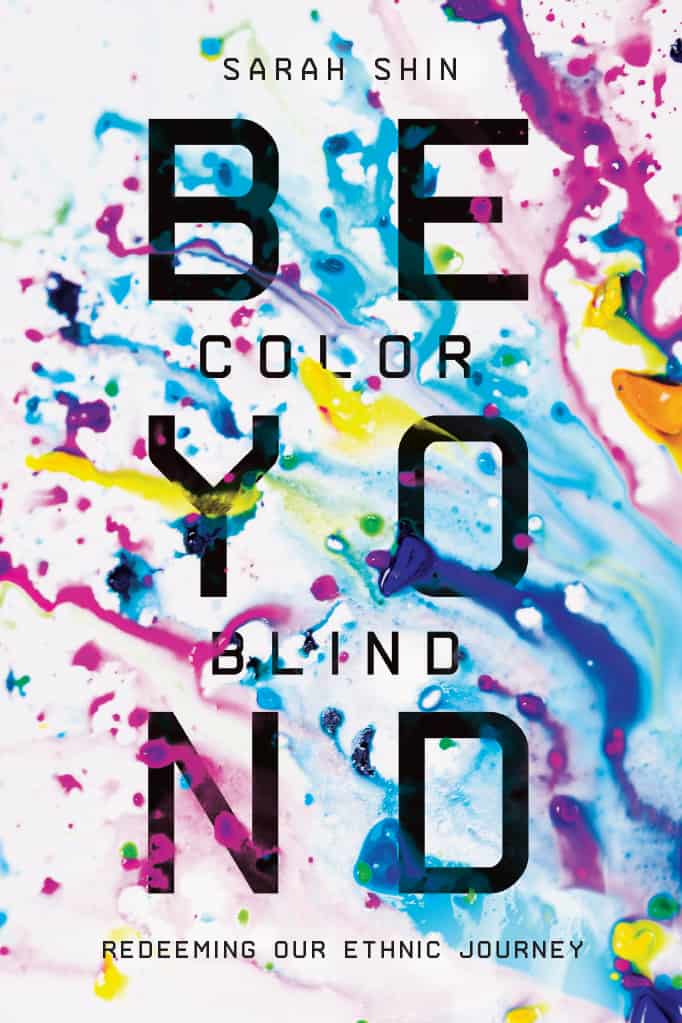
I have a dream that my four little children will one day live in a nation where they will not be judged by the color of their skin, but by the content of their character.
~Martin Luther King, Jr.
Editor’s Note: On this the 50th anniversary of Martin Luther King, Jr.’s assassination, we invite you to reflect on these thoughts on color in the United States.
Michael, a twenty-four-year-old black man, was sharing with his small group about some hurtful experiences with racism that he had endured in the past year.
An elderly white woman tried to respond to his sharing with grandmotherly kindness.
“Oh Michael, when I see you, I see you. I don’t see your color.”
Michael didn’t know what to say, so he said nothing. But internally he thought, I’m a black man from Los Angeles. If you don’t see my color, you might as well not see me at all.
Using the paradigm of colorblindness, the woman was trying her best to affirm Michael’s humanity and dignity. She was trying to say, “I’m not one of those racist people who thought color was a reason to degrade you.”
But what Michael heard was invalidation: I don’t see you.
Why did they miss each other?
* * * * *
In the past, seeing color meant believing that society should be unevenly and unjustly divided by color. Today, many see colorblindness as a corrective to the problems of racism and prejudice. People who are eager to separate themselves from overt racists like to declare themselves colorblind.
Maybe you believe in colorblindness, or maybe you’re disenchanted by it. If you’re the former, you might see our present diversity in the United States and across the world as the triumph of a diverse, colorblind society. Colorblindness and diversity is celebrated in universities, workplaces, and churches alike. We elected a black president, not once, but twice. Surely these are signs of a post-racial society.
However, in 2015, a twenty-one-year-old white man killed nine parishioners and pastors that had welcomed and prayed with him at Emanuel African Methodist Episcopal Church, a historic black church in Charleston, South Carolina. When he was apprehended, the man confessed to wanting to start a race-war between white and black. He was a self-proclaimed white supremacist.
If education is the answer to racism, why do even our top schools seemed plagued by racial brokenness?
This massacre is only one of the many stories of heartbreak and injustice affecting the black community. Trayvon Martin, Tamir Rice, Eric Garner, Michael Brown, and Sandra Bland have become the known names of black men, women, and children who died at the hands of white men and law enforcement officials who were not indicted. The public outcry against these and many other deaths of black Americans at the hands of police led to the Black Lives Matter movement. Some insist that education is the answer to eliminating racism, but our universities don’t seem any better. In recent years, students vandalized Northwestern University’s interfaith chapel with ethnic and homophobic slurs. Harvard Law School students placed strips of tape across display photographs of black professors. White dorm-mates at San Jose State bullied a black student, calling him the N-word and three-fifths of a person while repeatedly forcing a bike-lock chain around his neck. If education is the answer to racism, why do even our top schools seemed plagued by racial brokenness?
On top of this, Muslim Middle Eastern students at North Carolina State University were shot and killed in an altercation with a white neighbor in 2015. An Asian couple and a Puerto Rican man were gunned down by a white neighbor in Milwaukee for “not speaking English.” The election campaign of 2016 exposed all sorts of rhetoric against Mexicans, immigrants, Muslims, and more. Similar nationalist, anti-immigrant, and anti-refugee mantras reverberate through Europe and the rest of the world. We are not a colorblind society. These issues are not colorblind. They are racially and ethnically charged.
We are not a colorblind society. These issues are not colorblind. They are racially and ethnically charged.
In a documentary about racial peace, Archbishop Desmond Tutu and Dr. John Hope Franklin discuss the colorblind issue. Franklin says there are people who think “we don’t need to do anything about the problems that we have,” and “just think colorblind and the problems will themselves disappear.” Tutu and Franklin assert that colorblind people have a hard time seeing the existing racial inequality and injustice. Individuals claiming colorblindness cannot address racial issues that they cannot see.
Naomi Murakawa, a professor in African American history, writes, “If the problem of the twentieth century was, in W. E. B. Du Bois’s famous words, ‘the problem of the color line,’ then the problem of the twenty-first century is the problem of colorblindness, the refusal to acknowledge the causes and consequences of enduring racial stratification.” This might be why you are in the second camp of being disenchanted with colorblindness, because you’ve found that colorblindness does little to help dismantle existing injustice. In The New Jim Crow, Michelle Alexander helps document the reality that today the United States holds more black adults in correctional control (prison, jail, probation, or parole) than the total number of slaves that existed before the abolition of slavery. It’s slavery in the twenty-first century by another name. If you are part of an ethnic community that is struggling with the lasting effects of racism on your personal life and family, colorblindness isn’t much comfort in your time of need.
The second point that Tutu and Franklin raise is that differences are not inherently bad. In fact, according to Tutu, “differences are not intended to separate, to alienate. We are different precisely in order to realize our need of one another.” Colorblindness seems to deny the beautiful variations and cultural differences in our stories. How would you feel if you shared something that’s part of your Chinese, black, Irish, or Colombian background, and someone replied, “I’m colorblind!”? Blind to what? The food, stories, and cultural values that make up the valid and wonderful parts of who we are?
Colorblindness, though well intentioned, is inhospitable. Colorblindness assumes that we are similar enough and that we all only have good intentions, so we can avoid our differences. Given ethnic tensions exposed by the 2016 election, we’re seeing instead that our stories are different, and those differences cannot be avoided. Racially charged, ethnically divisive comments flood our social media outlets and news screens. Good intentions alone are ineffective medicine for such scars. The idea that we have transcended beyond ethnic difference has been exposed as a mirage.
We don’t live in a world that is in need of colorblind diversity, because diversity that rests on colorblindness seems to lead to chaos. We need something beyond colorblindness, something that both values beauty in our cultures and also addresses real problems that still exist in our society decades after the civil rights movement.
Sarah Shin is associate national director of evangelism for InterVarsity Christian Fellowship (IVCF). She is a speaker and trainer in ethnicity, evangelism, and the arts, and she previously served IVCF as an area director in Boston and as a regional coordinator of multiethnicity. A fine artist and painter, Sarah has a master’s degree in theology from Gordon-Conwell Theological Seminary and a master’s in city planning and development from MIT. She and her husband live in Cambridge, Massachusetts. This excerpt is taken from Beyond Colorblind: Redeeming Our Ethnic Journey and is used by permission.


